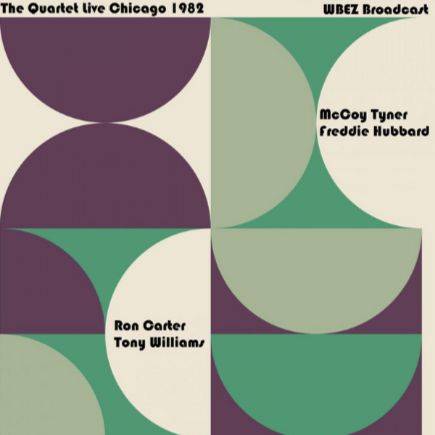Rhythm-a-Ning: l’esprit du bebop dans un clin d’œil à Monk
Composé en 1957 par Thelonious Monk, Rhythm-a-Ning est devenu un incontournable du répertoire bebop et post-bop. Son titre joue sur l’ironie et la rythmique: contraction probable de rhythm et thing-a-ning (un truc-qui-fait-ting ), il évoque déjà l’humour, la singularité et la démarche artisanale de Monk, figure centrale du jazz moderne.
Inspiré par un riff de Mary Lou Williams, amie de Monk, dans un arrangement de 1936 (Walking and Swinging), Rhythm-a-Ning est construit sur les grilles harmoniques de I Got Rhythm de George Gershwin, mais il en détourne l’usage à travers des accents déplacés, des silences signifiants et des accords asymétriques, typiques du langage monkien.
Au fil des décennies, Rhythm-a-Ning a été repris par une multitude d’artistes, devenant un terrain d’improvisation fertile, à la croisée de l’hommage et de l’invention. En jouant ce standard, les musiciens ne se contentent pas d’interpréter une composition: ils dialoguent avec l’esthétique de Monk, entre rigueur formelle et liberté expressive.
Énergie collective et virtuosité de McCoy Tyner
Enregistrée en direct le 4 septembre 1982 au Festival de Jazz de Chicago pour l’album The Quartet Live Chicago 1982, la version de Rhythm-A-Ning illustre la rencontre incandescente d’un quartet exceptionnel, éphémère mais fulgurant: Alfred McCoy Tyner au piano, Freddie Hubbard à la trompette, Ron Carter à la basse et Tony Williams à la batterie.
Tyner et ses partenaires s’emparent de Rhythm-A-Ning avec une liberté jubilatoire. L’introduction au piano installe immédiatement une tension rythmique captivante: Tyner joue sur la puissance des blocs d’accords, tout en préservant la souplesse du phrasé. Hubbard, incisif et flamboyant, fait jaillir des lignes d’une clarté éclatante, mêlant virtuosité et audace harmonique. Carter, fidèle à son rôle de pilier, assure un ancrage fluide et inventif, tandis que Williams propulse l’ensemble par un jeu foisonnant, à la fois précis et explosif.
La dynamique collective du quartet donne à cette interprétation un souffle quasi orchestral. Chaque solo s’inscrit dans une logique d’échange, où la tension et la relance constante créent un mouvement perpétuel. Le dialogue entre Tyner et Williams, notamment, évoque les grandes heures du jazz modal, mais avec une liberté rythmique et une modernité de ton caractéristiques des années 1980.
Rhythm-a-Ning: el espíritu del bebop en un guiño a Monk
Compuesta en 1957 por Thelonious Monk, Rhythm-a-Ning se ha convertido en una pieza imprescindible del repertorio bebop y post-bop. Su título juega con la ironía y la rítmica: probable contracción de rhythm y thing-a-ning (una cosa-que-hace-ting), alude de inmediato al humor, la singularidad y el enfoque artesanal de Monk, figura central del jazz moderno.
Inspirada en un riff de Mary Lou Williams, amiga de Monk, presente en un arreglo de 1936 (Walking and Swinging), Rhythm-a-Ning se basa en las progresiones armónicas de I Got Rhythm de George Gershwin, pero las subvierte mediante acentos desplazados, silencios significativos y acordes asimétricos, característicos del lenguaje monkiano.
A lo largo de las décadas, Rhythm-a-Ning ha sido versionada por numerosos artistas, convirtiéndose en un terreno fértil para la improvisación, entre homenaje e invención. Al tocar este estándar, los músicos no se limitan a interpretar una composición: entablan un diálogo con la estética de Monk, entre rigor formal y libertad expresiva.
Energía colectiva y virtuosismo de McCoy Tyner
Grabada en directo el 4 de septiembre de 1982 en el Festival de Jazz de Chicago para el álbum The Quartet Live Chicago 1982, la versión de Rhythm-A-Ning ilustra el encuentro incandescente de un cuarteto excepcional, efímero pero deslumbrante: Alfred McCoy Tyner al piano, Freddie Hubbard a la trompeta, Ron Carter al contrabajo y Tony Williams a la batería.
Tyner y sus compañeros abordan Rhythm-A-Ning con una libertad jubilosa. La introducción al piano establece de inmediato una tensión rítmica fascinante: Tyner explora la fuerza de los acordes en bloque sin perder la flexibilidad del fraseo. Hubbard, incisivo y brillante, despliega líneas de una claridad resplandeciente, combinando virtuosismo y audacia armónica. Carter, fiel a su papel de pilar, ofrece un anclaje fluido e inventivo, mientras que Williams impulsa al conjunto con un toque exuberante, a la vez preciso y explosivo.
La dinámica colectiva del cuarteto confiere a esta interpretación un aliento casi orquestal. Cada solo se inscribe en una lógica de intercambio, donde la tensión y el impulso constante crean un movimiento perpetuo. El diálogo entre Tyner y Williams, en particular, evoca las grandes horas del jazz modal, pero con una libertad rítmica y una modernidad de tono propias de los años ochenta.
Rhythm-a-Ning: lo spirito del bebop in un cenno a Monk
Composta nel 1957 da Thelonious Monk, Rhythm-a-Ning è diventata un punto di riferimento del repertorio bebop e post-bop. Il titolo gioca con ironia e ritmo: probabile contrazione di rhythm e thing-a-ning (una cosina che fa ting), richiama immediatamente l’umorismo, l’originalità e l’approccio artigianale di Monk, figura centrale del jazz moderno.
Ispirata a un riff di Mary Lou Williams, amica di Monk, presente in un arrangiamento del 1936 (Walking and Swinging), Rhythm-a-Ning si fonda sulle progressioni armoniche di I Got Rhythm di George Gershwin, ma ne sovverte l’uso con accenti spostati, silenzi significativi e accordi asimmetrici, tutti tratti distintivi del linguaggio monkiano.
Nel corso dei decenni, Rhythm-a-Ning è stata reinterpretata da numerosi artisti, diventando un terreno fertile per l’improvvisazione, tra omaggio e invenzione. Suonando questo standard, i musicisti non si limitano a eseguire un brano: instaurano un dialogo con l’estetica di Monk, tra rigore formale e libertà espressiva.
Energia collettiva e virtuosismo di McCoy Tyner
Registrata dal vivo il 4 settembre 1982 al Festival Jazz di Chicago per l’album The Quartet Live Chicago 1982, la versione di Rhythm-A-Ning testimonia l’incontro incandescente di un quartetto eccezionale, effimero ma folgorante: Alfred McCoy Tyner al pianoforte, Freddie Hubbard alla tromba, Ron Carter al contrabbasso e Tony Williams alla batteria.
Tyner e i suoi compagni affrontano Rhythm-A-Ning con una libertà gioiosa. L’introduzione al pianoforte stabilisce subito una tensione ritmica magnetica: Tyner gioca sulla potenza dei blocchi di accordi senza perdere la flessibilità del fraseggio. Hubbard, incisivo e fiammeggiante, fa scaturire linee di limpida brillantezza, fondendo virtuosismo e audacia armonica. Carter, fedele al suo ruolo di pilastro, offre un ancoraggio fluido e inventivo, mentre Williams propulsa l’insieme con un drumming ricchissimo, al tempo stesso preciso ed esplosivo.
La dinamica collettiva del quartetto conferisce a questa interpretazione un respiro quasi orchestrale. Ogni assolo si inserisce in una logica di scambio, dove la tensione e il rilancio costante generano un moto perpetuo. Il dialogo tra Tyner e Williams, in particolare, richiama le grandi stagioni del jazz modale, ma con una libertà ritmica e una modernità di tono tipiche degli anni Ottanta.
Rhythm-a-Ning: the spirit of bebop in a nod to Monk
Composed in 1957 by Thelonious Monk, Rhythm-a-Ning has become a cornerstone of the bebop and post-bop repertoire. Its title plays with irony and rhythm—likely a blend of rhythm and thing-a-ning (a kind of thing-that-goes-ting)—and immediately evokes Monk’s humor, singularity, and handcrafted approach as a central figure of modern jazz.
Inspired by a riff from Mary Lou Williams, a close friend of Monk’s, featured in a 1936 arrangement (Walking and Swinging), Rhythm-a-Ning is built on the harmonic framework of George Gershwin’s I Got Rhythm, but twists it through displaced accents, meaningful silences, and asymmetrical voicings—all trademarks of Monk’s musical language.
Over the decades, Rhythm-a-Ning has been interpreted by a wide range of artists, becoming a fertile ground for improvisation, blending tribute and invention. By playing this standard, musicians do more than perform a composition: they engage in a dialogue with Monk’s aesthetic, balancing formal rigor and expressive freedom.
Collective energy and virtuosity of McCoy Tyner
Recorded live on September 4, 1982, at the Chicago Jazz Festival for the album The Quartet Live Chicago 1982, this version of Rhythm-A-Ning captures the blazing encounter of an exceptional quartet—brief yet brilliant: Alfred McCoy Tyner on piano, Freddie Hubbard on trumpet, Ron Carter on bass, and Tony Williams on drums.
Tyner and his partners approach Rhythm-A-Ning with jubilant freedom. The piano introduction immediately establishes a gripping rhythmic tension: Tyner plays with the power of block chords while maintaining the fluidity of his phrasing. Hubbard, incisive and flamboyant, unleashes lines of radiant clarity, blending virtuosity with harmonic daring. Carter, true to his role as anchor, provides a fluid and inventive foundation, while Williams propels the ensemble with a rich, explosive precision.
The quartet’s collective dynamic gives this performance an almost orchestral breadth. Each solo unfolds within a spirit of exchange, where constant tension and renewal create a sense of perpetual motion. The dialogue between Tyner and Williams, in particular, recalls the great moments of modal jazz, yet with a rhythmic freedom and tonal modernity characteristic of the 1980s.


